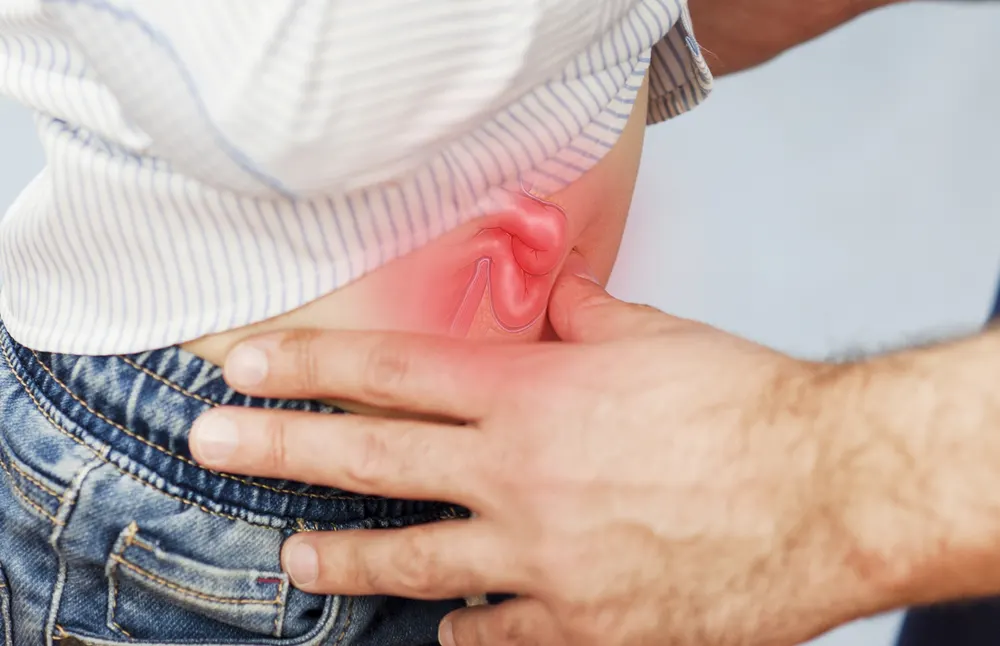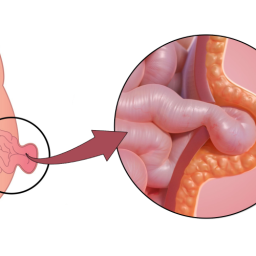
Understanding Umbilical Hernia and Its Impact on Exercise
An umbilical hernia occurs when a part of the intestine or fatty tissue pushes through a weak spot or opening in the abdominal muscles near the belly button. This condition can be present at birth or develop later in life due to factors such as pregnancy, obesity, or heavy lifting.
Symptoms of an Umbilical Hernia:
- A bulge or swelling near the belly button
- Pain or tenderness around the bulge, especially when coughing or lifting
- Discomfort when performing physical activities that involve the abdominal muscles
Before starting any exercise program, it is crucial to understand how the hernia might affect movement. Straining the abdominal muscles during exercise could increase intra-abdominal pressure, worsening the hernia or causing further discomfort.
2. Consult with a Healthcare Provider Before Exercising
Before starting or continuing any exercise routine with an umbilical hernia, it’s essential to consult with a healthcare professional, such as a doctor or physical therapist. They can evaluate the severity of the hernia and offer personalized advice based on your condition.
Key points to discuss with your healthcare provider:

- Whether it is safe to engage in certain exercises
- The best exercises for your specific type of hernia
- Any contraindicated movements or activities
- Signs to watch for that indicate the hernia may be worsening
Seeking professional guidance ensures that exercise is safe and beneficial while minimizing the risk of injury or complications.
3. Types of Exercise to Avoid with an Umbilical Hernia
Some exercises may put too much strain on the abdominal area and should be avoided or modified to prevent exacerbating the hernia. These exercises generally involve heavy lifting, excessive twisting, or movements that significantly increase intra-abdominal pressure.
Exercises to Avoid:
- Heavy weightlifting: Lifting heavy weights can increase intra-abdominal pressure, leading to strain on the abdominal muscles and worsening the hernia.
- Sit-ups and crunches: These exercises engage the abdominal muscles intensely, which can put pressure on the hernia.
- Twisting motions: Movements like Russian twists or twisting exercises can stress the abdominal area and potentially cause discomfort.
- High-impact activities: Exercises like running or jumping can cause jarring movements that may exacerbate the hernia.
If you enjoy these activities, it’s crucial to consult your healthcare provider to determine whether modifications or alternative exercises can be performed to achieve similar benefits.
4. Safe Exercises for Individuals with Umbilical Hernia
While some exercises may be too intense, there are several safe and effective exercises for individuals with an umbilical hernia that focus on building strength, improving flexibility, and maintaining cardiovascular health without straining the abdominal area.

a. Walking
Walking is a low-impact activity that is generally safe for individuals with an umbilical hernia. It helps maintain cardiovascular health, strengthen the lower body, and improve endurance without putting undue pressure on the abdominal muscles.
Benefits of Walking:
- Low impact on the abdomen
- Improves circulation and cardiovascular health
- Increases stamina and reduces stress
Tips for Walking:
- Start with shorter sessions, gradually increasing duration as endurance improves.
- Maintain good posture to avoid strain on the back and abdominal region.
b. Swimming and Water Aerobics
Swimming is an excellent full-body workout that doesn’t put excessive strain on the abdomen. The buoyancy of water supports the body, reducing the risk of injury or discomfort while exercising.
Benefits of Swimming:
- Low impact on joints and muscles
- Engages all major muscle groups
- Enhances cardiovascular health without abdominal strain
Tips for Swimming:
- Stick to low-impact strokes like freestyle or backstroke.
- Avoid movements that require intense twisting or excessive pressure on the core.
c. Stationary Cycling
Cycling on a stationary bike is another low-impact activity that can help improve cardiovascular health and strengthen the legs without straining the abdominal area.
Benefits of Stationary Cycling:
- Provides an effective cardio workout
- Strengthens the lower body muscles, including the quadriceps, hamstrings, and calves
- Minimal strain on the abdomen
Tips for Stationary Cycling:
- Keep the resistance level low to avoid overexertion.
- Ensure your posture remains upright and your core stays relaxed while cycling.
d. Resistance Band Exercises
Resistance bands are a great way to build strength without putting too much pressure on the hernia site. These exercises can help improve muscle tone, flexibility, and stability.

Benefits of Resistance Band Exercises:
- Target specific muscle groups without heavy lifting
- Can be adjusted to your fitness level
- Low risk of injury if performed correctly
Tips for Resistance Band Exercises:
- Focus on exercises that target the upper body, such as shoulder presses, bicep curls, and lateral raises.
- Avoid exercises that involve excessive core engagement, such as banded leg raises or twists.
5. Breathing Techniques and Core Support
When exercising with an umbilical hernia, it is essential to use proper breathing techniques to minimize pressure on the abdominal area. The goal is to avoid straining the core or holding the breath during exertion.
Breathing Tips:
- Inhale deeply before beginning a movement, and exhale as you perform the exertion phase of the exercise.
- Avoid holding your breath, as this increases intra-abdominal pressure.
- Focus on diaphragmatic breathing, where the abdomen expands as you breathe in, promoting relaxation and reducing pressure.
Using a support belt or abdominal binder during exercise may also help reduce strain on the hernia site and provide additional support for the abdominal muscles.
6. Gradual Progression and Monitoring
When resuming or starting an exercise routine with an umbilical hernia, it is essential to start slowly and gradually increase the intensity over time. Monitoring your body’s response to exercise will help ensure that you are not pushing yourself too hard.
Tips for Gradual Progression:
- Begin with low-intensity exercises and slowly increase duration and intensity.
- Monitor any changes in hernia symptoms, including pain, bulging, or discomfort.
- Take rest days as needed to allow the body to recover.
- Keep track of exercises that cause discomfort and avoid them in the future.
7. When to Stop and Seek Medical Attention
While exercising is essential for overall health, it’s crucial to listen to your body and stop if you experience any pain, discomfort, or other signs that the hernia may be worsening. Signs that you should seek medical attention immediately include:
- Increased pain or swelling around the hernia site
- Nausea, vomiting, or a fever (which could indicate strangulation of the hernia)
- Sudden, sharp pain or bulging in the abdomen
- Inability to push the hernia back in or worsening of the bulge
Always consult with your doctor if you notice any concerning symptoms during or after exercise.
Exercising with an umbilical hernia requires careful consideration of the types of activities performed and how they may impact the abdominal area. By focusing on low-impact exercises, maintaining proper posture, and using the right techniques, individuals with an umbilical hernia can stay active and improve their overall health while minimizing the risk of exacerbating the condition.
Remember, always consult with a healthcare professional before beginning or modifying your exercise routine, and listen to your body to avoid overexertion. With the right approach, exercise can be a beneficial part of managing an umbilical hernia and maintaining a healthy lifestyle.




